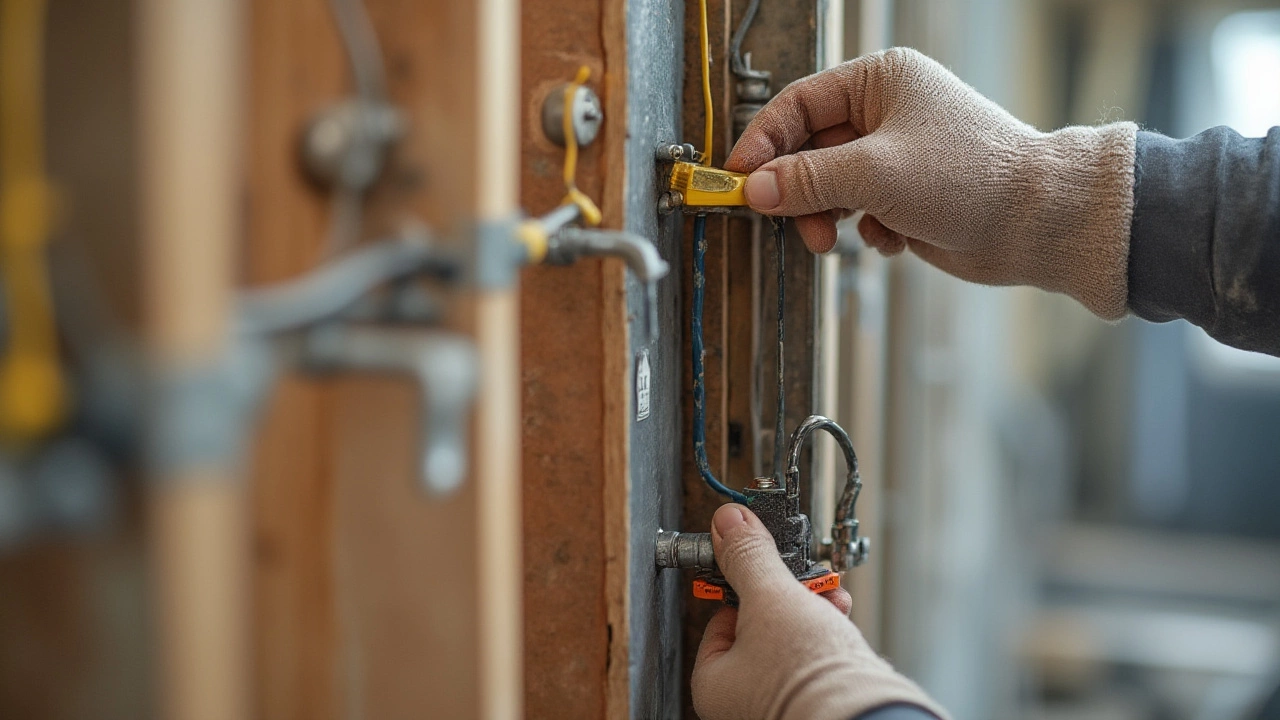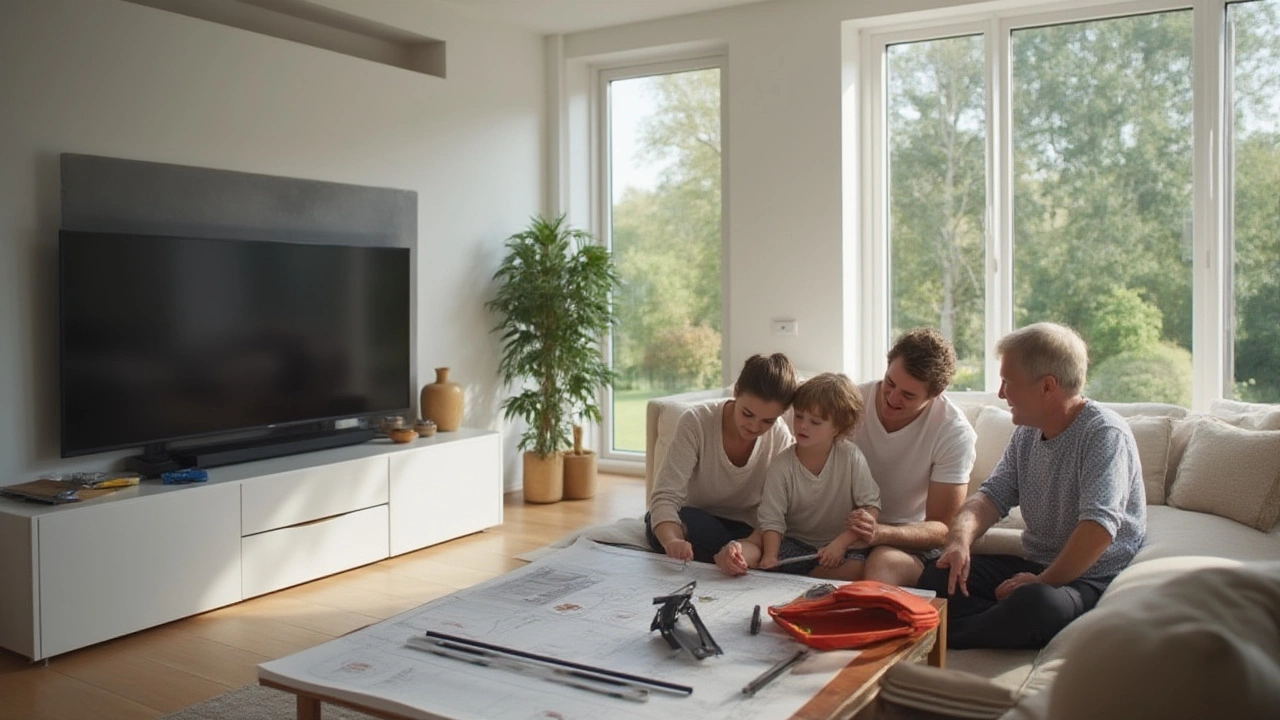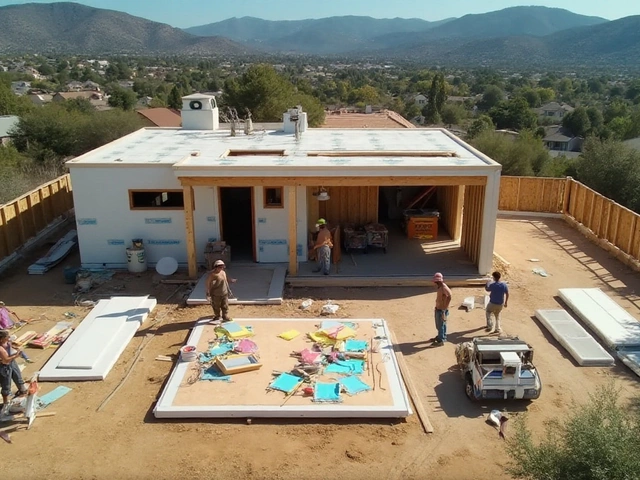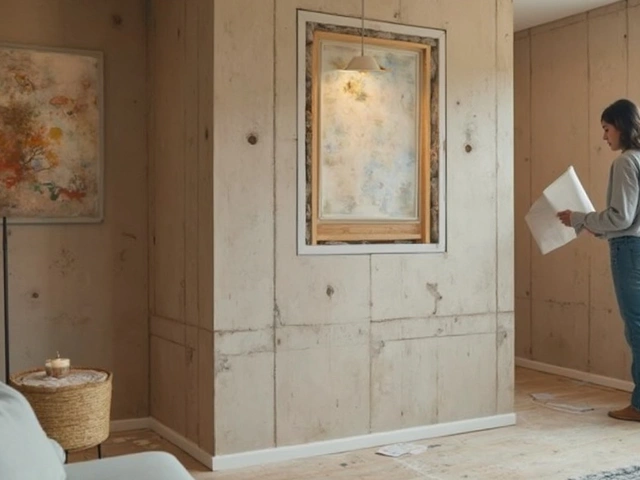Ever stared at your brand new living room wall, TV still in its box, and thought: “Is it safe to mount my TV here, or am I asking for trouble?” The appeal of a slim, cable-free look is huge, but in the UK new build homes, this simple idea stirs up a whole load of questions—sometimes even headaches. The last thing anyone wants is a caved-in wall, angry landlord, or warranty nightmare when you’ve barely moved in. If you’ve just picked up the keys or you’re lining up viewings on sparkling new developments, you need to know what’s actually behind those fresh sheets of plaster. Because the answer isn’t ‘just put up a bracket and get Netflix on’. There’s a lot more lurking behind that paint than you’d expect.
How New Build Walls Differ (and Why It Matters)
Most UK new builds from the past couple of decades don’t have old-school solid brick everywhere inside. Instead, you’re looking at stud walls—timber or metal frames with plasterboard on top—sometimes known as "dot and dab." This makes the job of mounting a TV completely different from what your dad did years ago on that Victorian brick monster. The problem? Plasterboard inherits zero structural strength from itself. Anyone can poke a hole with a screwdriver. If you bolt a heavy TV straight to plasterboard, gravity wins: cracked wall, shattered TV, angry partner.
Now, if you ask the folks at NHBC (the UK’s main new-build warranty provider), they’ll tell you those walls “bear normal loads” like pictures and shelves. But TVs bring a load that’s concentrated, heavy, and often placed higher than the average painting. A 55-inch screen might only be 18kg, but lever that out a foot from the wall and you’re adding stress way past the original design. Miss a stud and you’re doomed. Builders get cheeky with insulation, running countless cables and pipes right where you want to drill. Chasing for studs and crossing fingers isn’t professional, it’s a gamble. Oh, and your after-sales warranty might not be smiling if you botch the job. Many policies won’t cover accidental damage from DIY blunders.
Believe it or not, a 2022 report from the UK Homebuilding & Renovating Show found over 60% of new build buyers wanted to mount TVs, but nearly a third didn’t do it because of uncertainty about the walls or warranty fears. And those fancy “dot-and-dab” walls? They leave gaps behind the board—a real risk if you use the wrong wall plugs. Most new builds now hide loads of stuff behind plaster, making a stud finder absolutely non-negotiable (and you need the right kind, not the £10 plastic thing with a magnet). Metal stud walls—which are getting more common for efficiency—are trickier again. Metal's thin, can distort, and needs special fixings, and your best bet is to avoid large TVs on them unless you’re bracing across multiple studs.
Before you rush in, get the as-built plans for your home. Sometimes the developer hands these over at completion. You’ll see where all the joists, studs, sockets, and surprise pipes are. No plans? Use a multi-sensor wall scanner and draw your own map. You’d be amazed how many people drill straight into a live cable or mains water pipe in their first week. If the worst happens and you damage more than the wall, your home insurance claim might hit a brick wall (pun intended) and you’ll be left with dodgy DIY and a steamy living room.

Steps and Smart Tips for Mounting a TV in New Builds
Here’s what I tell friends who get starry-eyed over glossy TV ads: the only safe way is the careful way. No shortcuts. Too often, photos online show a TV bracket hanging off plasterboard with cheap plastic plugs—don’t be that person. If your wall is timber stud, find the studs using a quality finder. These are usually 400 or 600mm apart. Mark them clearly. Never guess. If it’s metal stud, double check the gauge, and see if it’s safe to brace across at least two studs. For dot-and-dab, use specialist expanding fixings designed for hollow walls or anchor direct into masonry. If you’re not sure about the wall, don’t just wing it.
Here’s a step-by-step plan if you’re determined to do it yourself:
- Check your new home’s warranty booklet. Some schemes call for written approval before drilling into certain walls.
- Locate all possible services (cables, pipes) with a decent multi-mode scanner. Don’t rely solely on developer plans—sometimes things move during construction and aren’t updated.
- If you spot timber studs, pick a bracket that spreads the weight (ideally across at least two studs) and only use supplied heavy-duty fixings—don’t substitute with random wall plugs.
- For dot-and-dab onto masonry, only use specialist plasterboard anchors designed for heavy loads—think GripIt, Fischer UX, or British Gypsum Gypframe fixings. Confirm behind the plasterboard is actually brick, not just insulation.
- On metal studs, use toggles designed for metal, and avoid large TVs unless you can reinforce the mounting area or span across multiple studs with a timber batten.
- Always use a level and preferably have a friend help. Dropping a TV is spectacular—for all the wrong reasons.
- To hide your wires, the simplest way is to use trunking or cable covers that stick to the wall (a must if you want your warranty intact). Some people cut channels into the plasterboard, but this makes good repair work near impossible and may void your home builder’s guarantee.
- Check that your mounting area clears any nearby light switches and sockets. UK building regs require certain zones for pipe/cable runs—don’t cut corners.
Professional fitters know all the tricks. Some installers offer wall “reinforcement” services for new builds—this might mean opening the wall, fitting horizontal noggins (timber blocks between studs), and patching up. It ain’t cheap but it guarantees you won’t hear a crash during Casualty. If you want a next-level finish, think about “first fixing” the TV cables before plaster goes up if you’re early enough: this means zero visible wiring straight to the sockets—clean and professional. Some up-market developers now offer TV points pre-braced and ready, but don’t just trust the label: always demand photos or a demo before you drill.
Oh, one last thing: fixings matter more than you’d think. UK home improvement forums are packed with war stories about wall plugs giving way, especially the push-in types meant for lightweight shelves. Always use a reputable brand, and buy more than you need—single-use only. The right screws and anchors can make a £100 bracket out-perform a £400 one done badly. Quality matters.

Warranties, Legal Stuff, and When to Get In the Pros
Not all developer warranties work the same way, and the devil’s in the small print. NHBC and similar policies will usually consider wall-mounted TVs “a modification”—and can be fussy about coverage for “accidental damage” caused during your own installation. The harsh truth? If you drill through a pipe or cause a wall to collapse, you may be on your own for repairs. That’s not to say you should never drill, but keep a copy of the warranty and snagging list handy. Some people get written permission for anything except the lightest picture hooks. A quick email to your warranty provider or customer care team, asking “I wish to wall mount a 55 inch TV using appropriate fixings—is this allowed under my policy?” can clear up a lot of potential future difficulties.
If you mess up and damage wiring or pipes (or worse, structural studs), it’ll likely invalidate your cover for that zone. If you’re renting your new build—especially in big schemes—ask first. Some management companies have rules about modifications, like stipulating professional installation or banning drilling outright in party (shared) walls. Ignore it, and you could face hefty de-installation bills at the end of your rental term.
The law won’t bail you out either. If you cause harm to the property through careless work, you’re on the hook. And if you’re thinking of selling soon, any bodge jobs left behind the TV will be picked up by a half-decent surveyor. Patching a wall is easy, but fixing hidden wiring is a pain—especially if you’ve been creative with routing cables inside the wall voids where they’re not meant to go. For anything complex, consider a registered electrician if you want to add extra outlets (UK regs say you can’t DIY these unless you’re certified). Modern TVs draw surprisingly little power, but add in a soundbar, console, and charger hub, and you’ll need proper power behind the screen.
Many UK installers (check they’re registered with NICEIC or NAPIT) offer TV-mounting bundled with cable tidying, creating proper sockets, and guarantees. If things go wrong and you’ve got proof of professional fitting, you stand a much better chance if warranty issues crop up. Some even offer liability insurance for accidental damage—it’s worth checking before paying cash-in-hand.
On the tech side, think about futureproofing. Are you the type who upgrades TVs every couple of years? If so, you might want a bracket that supports a range of VESA sizes, with plenty of adjustment. If your next TV is a totally different shape or weight, moving fixings can leave a patchwork of holes. Plan ahead, or at least keep spares of your original wall plugs and filler just in case.
The bottom line? It’s absolutely possible to wall-mount your TV in a new build, but you have to be smart about it. Skip the cheap fixings, avoid shortcuts, and double check the nitty-gritty details of your home’s build. If in doubt, call in the pros—a bit more upfront can spare you days of stress and costly mistakes. And when you settle back to watch your favourite series, you’ll know the screen isn’t going anywhere—except maybe on and off.





